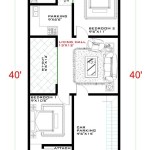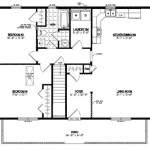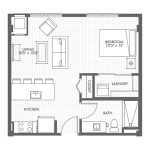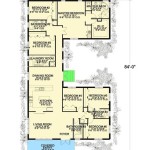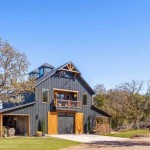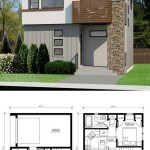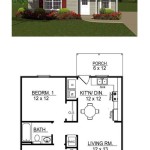Federal Style House Plans: A Comprehensive Guide
Federal style architecture, prominent in the United States from the late 1700s to the early 1800s, reflects the nation's newfound independence and burgeoning identity. Inspired by classical Roman and Greek architecture, this style embodies elegance, symmetry, and a sense of order. This guide explores the key features of Federal style house plans and offers insights for those considering this timeless architectural design.
A hallmark of Federal style homes is their symmetrical facade. Typically two or three stories high, these houses often feature a central entrance flanked by evenly spaced windows. This balanced design creates a sense of formality and grandeur. The front door, often adorned with an elaborate fanlight or transom window and sidelights, serves as a focal point, emphasizing the home's central axis.
Classical details abound in Federal style architecture. Dentils, delicate rectangular blocks arranged in a repeating pattern, often adorn the cornices and eaves. Columns, pilasters, and pediments, reminiscent of ancient Greek temples, further enhance the classical aesthetic. These architectural elements contribute to the refined and sophisticated appearance characteristic of Federal style homes.
Low-pitched roofs, often hipped or gabled, are another defining feature. Dormers, projecting windows from the roof, provide additional light and ventilation to the upper stories. Chimneys, often placed symmetrically on either side of the roof, contribute to the balanced composition of the exterior.
Interior layouts of Federal style homes typically follow a formal, symmetrical arrangement. A central hallway often divides the house, providing access to rooms on either side. Spacious rooms with high ceilings create an airy and elegant atmosphere. Large windows maximize natural light and offer picturesque views of the surrounding landscape.
Fine craftsmanship and attention to detail are evident throughout Federal style interiors. Elaborate moldings, intricate woodwork, and elegant fireplaces showcase the skill of the period's artisans. These decorative elements contribute to the richness and sophistication of the interior spaces.
Common building materials used in Federal style homes include brick, wood, and stone. Brick facades, often painted in muted colors such as white, cream, or pale yellow, exude a sense of timeless elegance. Wood siding, particularly clapboard or shingles, is another popular choice. Stone, though less common, adds a touch of grandeur and permanence to the structure.
Adapting Federal style plans to modern living often involves incorporating contemporary amenities while preserving the historical character of the design. Updated kitchens and bathrooms with modern appliances and fixtures can seamlessly integrate with the traditional aesthetic. Open floor plans, while not characteristic of the original style, can be carefully introduced to create more spacious and functional living areas.
Landscaping plays a significant role in complementing the elegance of Federal style homes. Formal gardens with geometrically shaped hedges and symmetrical plantings enhance the home's classical design. Mature trees and well-maintained lawns contribute to the overall sense of grandeur and tranquility.
Variations within the Federal style exist, reflecting regional influences and evolving architectural trends. The Adam style, a more ornate sub-style, features intricate plasterwork and delicate decorative details. The later Adamesque style exhibits a simpler, more restrained interpretation of the Federal aesthetic.
Choosing a Federal style house plan requires careful consideration of several factors. The size and layout of the house should accommodate the needs and lifestyle of the occupants. The site's topography and surrounding environment should also be taken into account to ensure the home harmonizes with its surroundings. Working with an experienced architect who specializes in historical styles can ensure the successful execution of a Federal style project.
Researching historical examples of Federal style architecture provides valuable inspiration and insights for designing and building a new home. Visiting historic homes and museums allows for firsthand observation of the style's defining features and nuances. Studying architectural drawings and photographs further enhances understanding of the principles and proportions that characterize Federal style architecture.
Building a Federal style home represents a significant investment in architectural heritage. The timeless elegance, refined details, and enduring appeal of this style continue to captivate homeowners and architects alike. Careful planning, meticulous craftsmanship, and a deep appreciation for historical authenticity are essential for creating a Federal style home that will stand the test of time.
Maintaining the integrity of a Federal style home requires ongoing care and attention. Regular maintenance of the exterior, including painting and roof repair, preserves the home's appearance and structural integrity. Preservation of original interior features, such as woodwork and moldings, ensures the historical character of the home remains intact.
Federal style homes represent a significant chapter in American architectural history. These elegant and stately residences embody the aspirations and ideals of a young nation. Their enduring popularity testifies to the timeless appeal of classical design and the enduring value of architectural preservation.

Plantation Architecture In Alabama Encyclopedia Of

Housing Allowance For Pastors The Ultimate Guide 2024 Edition Reachright

What Floor Plan Suits Your Family Cms Homes

Gable Roof Definition Types Design Lesson Study Com

The 2024 2025 Fafsa Is Now Open Olivet Nazarene University

Influential 19th 20th Century Architects Lesson Study Com

Room By George S Mount Vernon
:max_bytes(150000):strip_icc()/PO-illinois-crop-56aadc265f9b58b7d00906b3.jpg?strip=all)
Post Office Buildings In The Us Should We Save Them

Ic Interior Design Architecture Types Examples Lesson Study Com

Joseph Priestley House Wikipedia
Related Posts


